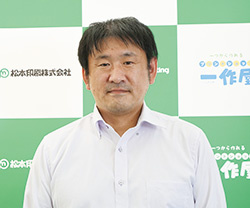
PT. MIMAKI INDONESIA

Case Study
Mimaki user stories
Challenges
Improvements
Due to the lack of printing equipment and skills, we used to respond to the service of putting names on can lids through outsourcing. The outsourcing had minimum lot size requirements (at least 50 pieces, etc.), so we had to produce more than the desired quantity. And the design was limited to only a single color, which also bothered us.
Direct printing with the “UJF-7151 plus” UV inkjet printer allows us to print a minimum of one piece in full color. Photo printing is also now available, while the delivery time has become shorter from about two months to four to six weeks.
Product installed
Swatch Store Harajuku's new service x Only one original watches in the world with UV printer
Challenges
Improvements
We thought that providing new services is necessary for us to open the flagship store in Harajuku, a town of fashions and arts.
Permanently installing UV printer “UJF-6042MkII” in the store made it possible for us to launch a store-printing service of only one original watches.
Product installed
THERMO Co., Ltd. Tokyo Sales Department (Itabashi-ku, Tokyo) : UJF-6042MkII, CF2 Series
Challenges
Improvements
With the increasing number of requests for printing on three-dimensional objects that cannot be handled by roll-type inkjet printers, the company was faced with the problem of being unable to handle such jobs with short delivery times by outsourcing, and suffering many failures in terms of quality.
By introducing a flatbed UV printer and cutting plotters, they are now able to meet short delivery times and directly print on a variety of commercial goods, which was not possible before. This has led to an increase in new orders in the novelty field. Another advantage is that they can easily create prototypes in-house. In the future, they hope to highly promote UV printing and stay closer to their customers.
Product installed
Challenges
Improvements
By identifying changes in demand associated with changing times, we would like to contribute to the revitalization of the local community as a proposal-based company through in-house label printing, mail-order business promotion, etc.
With a total of 12 Mimaki’s IJPs and cutting plotters, ranging from small to large, we produce not only labels but also a variety of products from signs to original goods. In the future, we would like to strengthen our mobility by increasing the number of small IJPs.
Product installed
Penmasu-tosouten Co., Ltd. (Kuwana City, Mie) : UCJV300-160
Challenges
Improvements
Although mainly engaged in painting by hand, we have more orders for signboard that has been outsourced. To respond to delivery time and to perform minor design change efficiently, in-house production has become necessary. With our skilled employees nearing retirement, we aimed for standardization by machine.
The first inkjet printer we installed is Mimaki's UCJV300-160. There are many jobs with short delivery times, and the UV printer that requires no drying time has good work efficiency and is appreciated by customers as well. Its cutting function is also appealing, which enables the printer to play two roles, allowing us to reduce the installation space and make our business extensive.
Product installed
PRINTPARK Co., Ltd. (Nagoya City, Aichi) : UCJV300-160
Challenges
Improvements
Although having responded to sheet-type advertisements such as outdoor graphics, outside posters, wallpaper, and graphics on floor, we were in need of another way of production as more requests for three-dimensional sign displays and sales promotion items for stores.
UV print using UCJV300-160 allows us to respond to various media. We were impressed by beautiful color development of Mimaki's white ink whose color density is high with no color mixture. It is used on wrapping film for vehicles, as well as on wallpaper and window film.
Product installed
Showa Co., Ltd. (Kagoshima City, Kagoshima) : UCJV300-130
Challenges
Improvements
Our main job is production of construction signboards and safety signs, of which delivery time is as short as 2-3 days. In spite of such short delivery time, because of over 24h of required drying time of solvent ink printing, we had kept some customers waited.
The UV printer UCJV300-130 requires no ink drying time. It allows to attach the printed sheet on the construction signboard right after printing, which improved the work efficiency. Having the cutting function, it supports small lot production and contributes to cost reduction when producing products like stickers used at construction sites.
Product installed
Komoro Animal Hospital (Komoro City, Nagano) : 3DFF-222
Challenges
Improvements
We purchased a 3D printer to output CT data of animal bones, etc. in 3D and tried various ways, but it did not go well.
With the introduction of the 3DFF-222, we were able to output the skeletal model as we wanted with support on how to output. The 3D model has made it easier for us to explain the surgery to the owners and to help them understand the importance of the CT scan.
Product installed
L and F Co., Ltd. (Itabashi-ku, Tokyo) : UJF-6042MkII
Challenges
Improvements
We used to outsource printing on plastic parts and metallic plates, laser cutting acrylic plates, etc. in the process of manufacturing products, which took us a lot of time and money.
It became possible to do the laser cutting and printing processes in-house, which led to a cost reduction. We could also reduce the time for prototype production, which enabled us now to make various proposals.
Product installed
Hagiwarainsatsu Co., Ltd. (Itabashi-ku, Tokyo) : UJF-6042MkII
Challenges
Improvements
We were exploring possibilities of new business utilizing our print technology to compensate for the decline in orders for paper-based print which we had handled with offset printers and on-demand printers.
Utilizing the know-how of data generation and proofreading that we used to do to process orders for paper-based print, we succeeded in moving into the new business field of original goods and novelties.
Product installed









